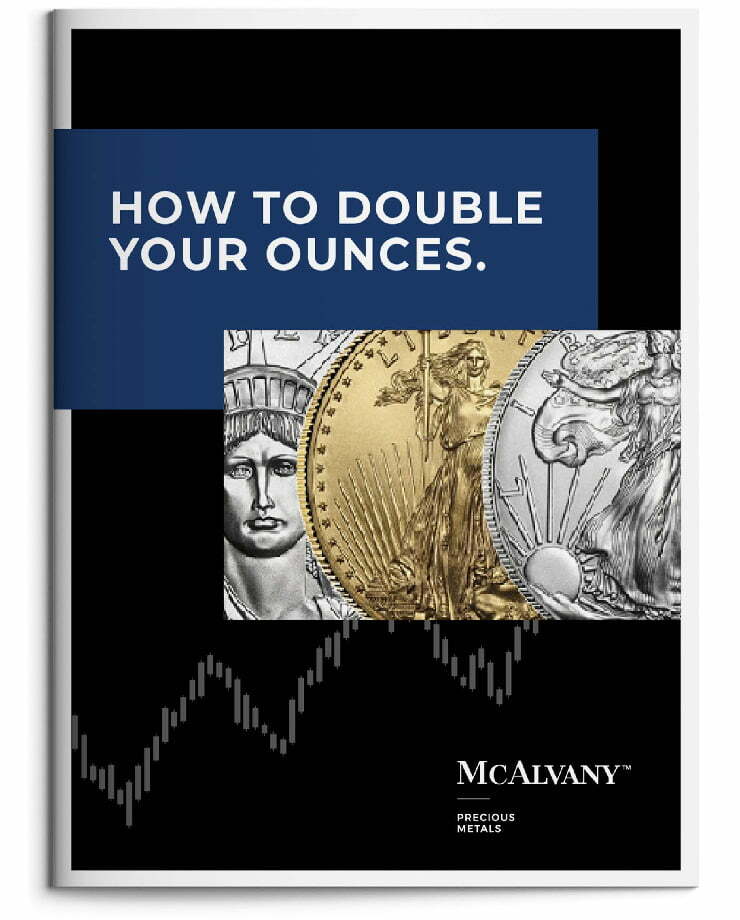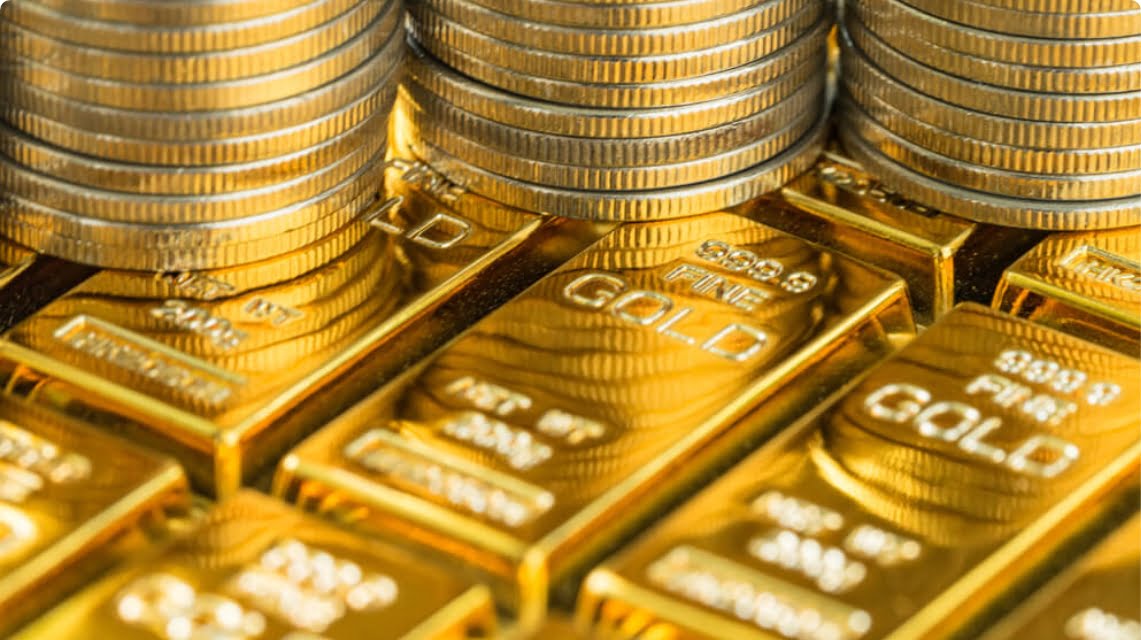Right Place, Right Time
This was a big week at the remarkably busy corner of Wall Street and Main Street. Much like last week, domestic and international politics reigned supreme and fostered neck-snapping cross-asset volatility. All told, despite wild swings, stocks finished higher on the week, bonds got crushed, yields spiked, and the dollar crashed.
Most importantly, however, bucking the trend of face-ripping volatility seen across other assets, gold distinguished itself as the one asset singularly certain of its mission—higher prices.
While other assets whipsawed among the immense uncertainty of the macro moment, gold was unwavering in its ongoing rocket-shot higher, ever deeper into new all-time high territory.
Notably, the precious metals mining stocks finally cut anchor and cleanly broke out higher from a multi-year basing pattern and previous resistance levels. The undaunted clarity of gold’s bullish move and the market’s sudden embrace of the mining shares culminated in a nearly 20% weekly gain for the HUI gold miner’s index.
In short, it was a great year for the gold mining sector crammed neatly into a single short week in early April. Better yet, in HAI‘s view, the mining stocks still have immense catch-up to do on the road to a well-deserved re-rate to a much higher fair value multiple versus physical gold. We should expect that road to be bumpy, but, in HAI‘s view, this week was a very positive foreshadowing of the mining sector’s further catch-up intentions to come.
So, what was the catalyst for this very big week on the corner of Wall Street and Main Street? It was newly redirected global capital flows and the bond market, plain and simple.
Two weeks ago, Charles Schwab’s Liz Ann Sonders warned of a “dramatic decline in demand for U.S. assets from abroad.” Sonders even remarked that “we may be seeing the early stages of a tectonic shift in global investment flows” away from U.S. assets. Supporting her statement, Sonders referenced two data points. First, March saw the largest monthly outflows of U.S. assets by foreign private sector investors in a year. Second, and much more importantly, March also saw the fastest pace of U.S. equity selling by the foreign official sector—ever!
Importantly, that was in March, even before the Trump “Liberation Day” tariff bomb had even been dropped. And make no mistake, that tariff bomb represents a future fundamental 180-degree redirection of the U.S. dollar-denominated trade flows that have defined the post-1971 U.S. dollar reserve status structure of the global petrodollar system.
To be clear, in HAI‘s view, a break away from the post-1971 system that facilitates a redirection of global capital flows in such a way that weakens the dollar, balances trade, and as a result revitalizes the U.S. manufacturing sector, is in fact the goal of Trump administration policy. That’s crucially important because when the U.S. closed the gold window, policymakers implemented a strong dollar policy to make the dollar and Treasuries “as good as gold.” But the wheels have long come off the strong dollar policy. It’s no longer tenable now that Triffin’s dilemma has taken hold for the United States. To MAGA, it seems Trump is convinced that a weak dollar policy and a break from the post-1971 system is necessary. Consequently, if a new weak dollar policy is needed, the dollar and Treasuries are no longer “as good as gold,” and the global system has little alternative but to readopt gold as the primary global reserve asset standard.
But crucially, if the stress to the existing system in transition is too great too soon, and the stock and bond markets collapse before U.S. manufacturing has rebounded, the plan will likely fail.
The bond market is the structural heart of the post-1971 U.S. dollar-centric global financial system. It is the undisputed big dog in the financial system room. This week, selling in the bond market in response to Trump’s “Liberation Day” tariff announcement, in just a matter of days, brought the bond market, and by extension the financial system, to the brink of collapse.
Amid heavy selling and surging yields early Wednesday, the MOVE bond market volatility index reached an extreme high level hit only three times previously in the past 30 years. Most importantly, the MOVE reached extreme high levels that Harley Bassman, the index’s creator, has said indicate that the Fed has lost control of the bond market. To be clear, losing control of the bond market today means a ramping higher of yields that could quickly force a debt spiral, a full-blown U.S. fiscal crisis, and a terminal bond market collapse.
Former political advisor and pundit James Carville once famously said, “I used to think that if there was reincarnation, I would want to come back as the President or the Pope or as a .400 baseball hitter. But now I would want to come back as the bond market. You can intimidate everybody.”
Now, HAI isn’t much of a Carville fan. Nor does this author subscribe to a worldview in which the ability to “intimidate everybody” is paramount. Far from it. But this week, Carville’s point regarding the intimidating power of the bond market was on full display.
After Treasuries got crushed, yields surged, and the MOVE bond market volatility index surged to DEFCON-1 warning levels, President Trump on Wednesday announced a temporary 90-day suspension of his reciprocal tariffs on foreign nations other than China that he had announced just last week.
After Trump backtracked on the tariffs, he was asked by the press if the extremely concerning action in the bond market had caught his attention and influenced his decision to deescalate on tariffs. In HAI‘s view, the President’s response was rather telling. Trump said, “The bond market is very tricky. I was watching it, but if you look at it now, it’s beautiful…but yeah, I saw last night where people were getting a little queasy.”
In HAI‘s view, it’s no coincidence that the noted queasiness in the bond market likely caused Trump to modify and ease his tariff plan, at least temporarily. Importantly, in HAI‘s view, Trump’s responsiveness to the bond market implies that he and Treasury Secretary Scott Bessent will be counting on the Federal Reserve at some point, likely very soon, to implement some form of yield curve control (functional equivalent to quantitative easing bond buying) to ensure bond market stability amid his attempts to restructure the global system.
In other words, the severe Treasury market dysfunction seen in the days following Trump’s original tariff announcement means that, unless Trump is willing to abandon his MAGA goal to restructure the trade and monetary system to revitalize U.S. manufacturing, the Fed is going to get back in the business of growing its balance sheet even into rising inflation from tariffs—likely in the not-too-distant future.
The recent strength in gold, not to mention the gold mining stocks, seems to be evidence of the sector anticipating all of this—both the gold-bullish implications of gold returning as primary global reserve asset and the implications of an extremely dollar-negative/gold-bullish inflationary Fed response to quell bond market dysfunction. Gold already seems to be sniffing these outcomes out as a highly probable eventuality.
Now, while euphoria in the gold space is justifiably running red-hot at present, caution is still warranted in the near term. Trump’s global restructuring plan, if implemented, will effectively catalyze a global capital flow transition from “dollar recycling” to “gold recycling.” But those shifting global capital flows and the initial second derivative impact of a slowing economy present another risk for all assets, including gold—for a time.
In his latest April market missive, HAI-favorite market commentator John Hussman unleashed a potent batch of smelling salts sufficient to knock complacency out of market bulls of all stripes. As Hussman put it, “In recent years, our most reliable measures of stock market valuation have pushed beyond their 1929 and 2000 peaks, and I’ve described the period since early 2022 as the extended peak of the third great speculative bubble in U.S. history. In my view, that process is now complete. The stock market now faces severe downside risk ahead… The U.S. economy now faces an imminent recession…”
Hussman continued saying that his Recession Warning Composite Indicator that has correctly called every previous recession since the 1950s “became unfavorable on Tuesday, April 1st, with the latest purchasing manager’s report. Wednesday’s tariff announcement only amplifies recession risks that have been developing for months. Humpty Dumpty has been wobbling on that high wall for a while now. On Wednesday [Liberation Day], Humpty Dumpty was pushed.”
The extremely gold-bullish Trump-sponsored transition from a decades-long global system of dollar recycling to gold recycling, as gold once again assumes its traditional pre-1971 role as primary global reserve asset, looks extremely good indeed at present. The caveat to temper gold-bull complacency is that if Hussman is correct and the third great speculative asset bubble in U.S. history is now popping, we can anticipate violent periods of deleveraging that trigger indiscriminate selling—potentially across all assets.
These are unprecedented times, presenting unprecedented circumstances. Given gold’s exceptionally bullish fundamental set-up, we don’t yet know if systemic deleveraging—should it occur—will take gold and the mining stocks down with it for a time. But in HAI‘s view, you play the gold bull as long as it proves itself.
If the financial asset bubble pops and deleveraging hits gold and the related miners, risk mitigate accordingly. The silver lining to gold’s golden future, however, is that in the aftermath of any deleveraging, gold should quickly and forcefully reassert its trajectory towards far higher price levels than anything we’ve seen so far. Furthermore, in HAI‘s view, the gold mining stocks currently assuming market darling status of late will also soon reassert themselves as the market darlings of the ensuing market regime that follows.
So far, amid recent market turbulence and outside of one deleveraging day, we’ve seen gold and the miners demonstrably resist the market’s downside pull. Given the sector’s massively bullish tailwinds, HAI gives the sector the benefit of the doubt for now. If deleveraging unfolds, however, and gold and related assets get sucked into the vortex, HAI would view significant price weakness as temporary and buy low in anticipation of the expected subsequent springboard higher.
What is absolutely clear, however, is that to have been long gold and the gold miners this last week was to have, undeniably, been in the right place at the right time. HAI expects much more of that to come as the developing ultra-powerful gold-bullish secular fundamental dynamics constructively evolve over time.
Weekly performance: The S&P 500 was up 5.70%. Gold gained 6.57%, silver popped 8.82%, platinum was up 3.60%, and palladium was off by 0.61%. The HUI gold miners index surged 19.77%. The IFRA iShares US Infrastructure ETF was up 3.38%. Energy commodities were volatile and lower on the week. WTI crude oil was off 0.79%, while natural gas was off 7.56%. The CRB Commodity Index was up 0.68%. Copper was up 2.75%. The Dow Jones US Specialty Real Estate Investment Trust Index was off 0.38%. The Vanguard Utilities ETF was up 2.34%. The dollar index was down 3.14% to close the week at 99.76. The yield on the 10-yr U.S. Treasury was up 49 bps to close at 4.49%.
Have a wonderful weekend!
Best Regards,
Morgan Lewis
Investment Strategist & Co-Portfolio Manager
MWM LLC















